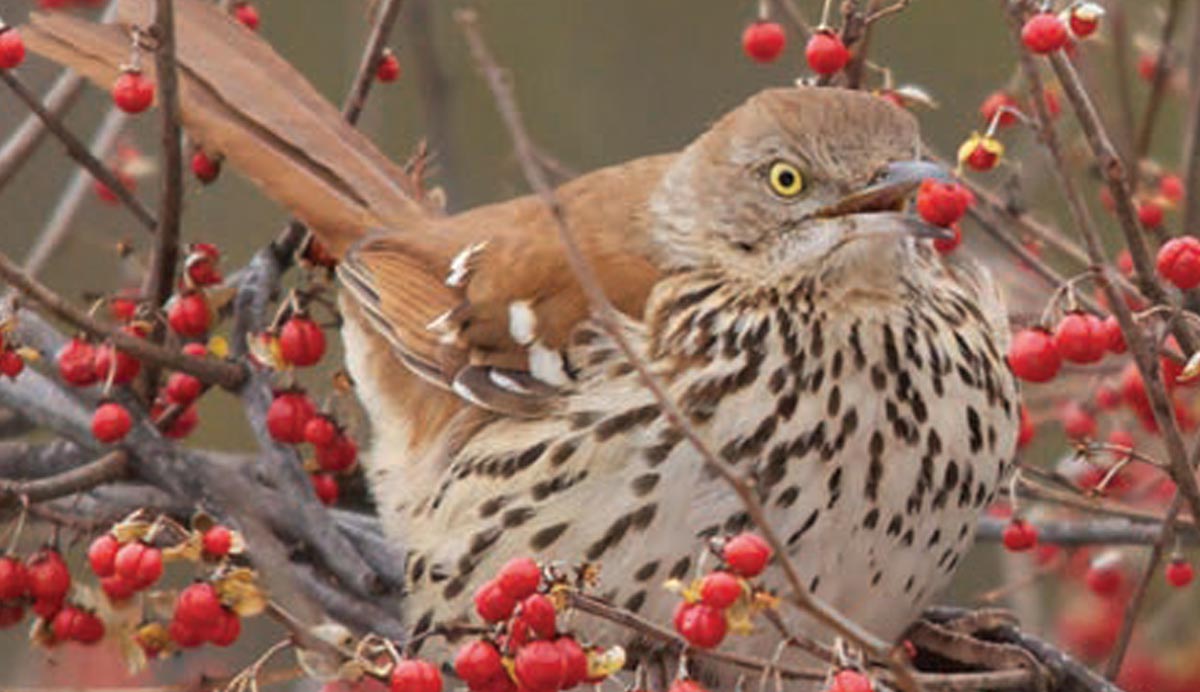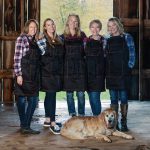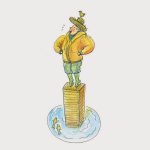
WITH WINTER AT THE DOORSTEP, birders are awaiting the arrival of cheery cold-season visitors to their feeders. Food supply in the wild – locally and elsewhere – is the major factor that determines which birds we will see outside our windows.
Across Watershed country, bushes and trees are sagging beneath the weight of seeds and fruit. It has been a productive season and wintering birds will be pleased. But how will this bountiful harvest translate into visitors to our backyards? Birds spend only 20 per cent of their time at feeders. The balance is spent foraging for food in the wild. Feeders are a convenience, one of many stops during the course of a day. The question is, if there is plenty of food in the wild, will local birds even bother to pay attention to our carefully prepared fare?
Don’t worry. The resident birds – blue jays, chickadees, juncos and nuthatches – should continue to patronize our feeders as they have done every year. Old habitats among our resident birds are hard to break. But there may be fewer of them that take advantage of the abundance of food in the wild, but they’ll come.
More difficult to predict is the winter arrival of the northern finches, a family that includes pine grosbeaks, common redpolls, white-winged and red crossbills and pine siskins. These species breed in the boreal forests of Ontario and only migrate south when their natural larders become bare. This is when the northern finches find our bird feeders in a movement known to birders as an ‘irruption.’ When they arrive, they gorge themselves on a supply of natural and human-supplied seed that never seems to end.
Birder extraordinaire Ron Pittaway of Minden has been studying finch movement for more than 20 years. Ever year, he predicts which northern bird species we should expect to see in our area and at our feeders, basing his predictions on his intimate knowledge and understanding of the preferred wild foods of each species, and the abundance of that crop. If any single crop or food supply has crashed in the north, the species that depends on that crop, may show up here.
Ron’s findings for this year conclude there will not be an irruption of winter finches to our area. Most winter finches will stay in the north thanks to abundant spruce cone crops across the boreal forests in Ontario, Quebec, and Newfoundland. This year’s conifer, birch and other seed crops are plentiful to excellent in much of the northeast. The odd boreal straggler may appear south, but not the droves of finches that we have seen some winters.
Don’t worry. If the northern finches don’t come to our area, there will still be lots of colour provided by the blue jays, cardinals and woodpeckers, along with the soft browns of mourning doves and American tree sparrows.
Our feeders are poised and ready.
Story by:
Terry Sprague
Photography by:
John Vieira




